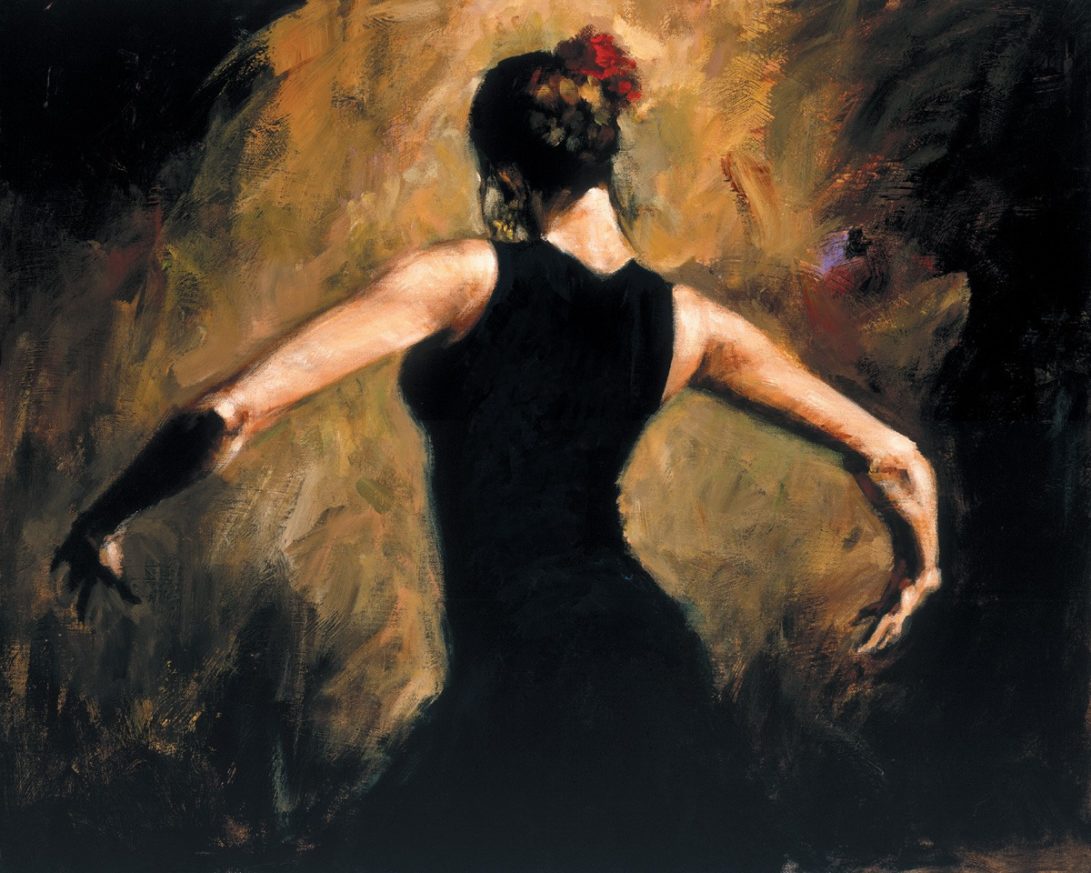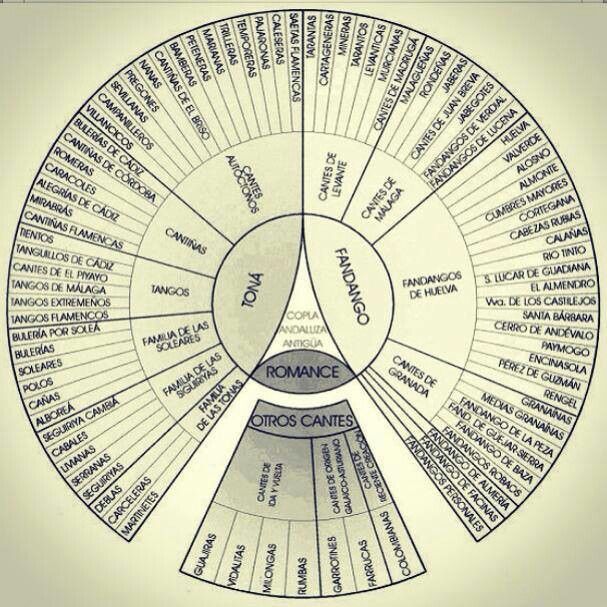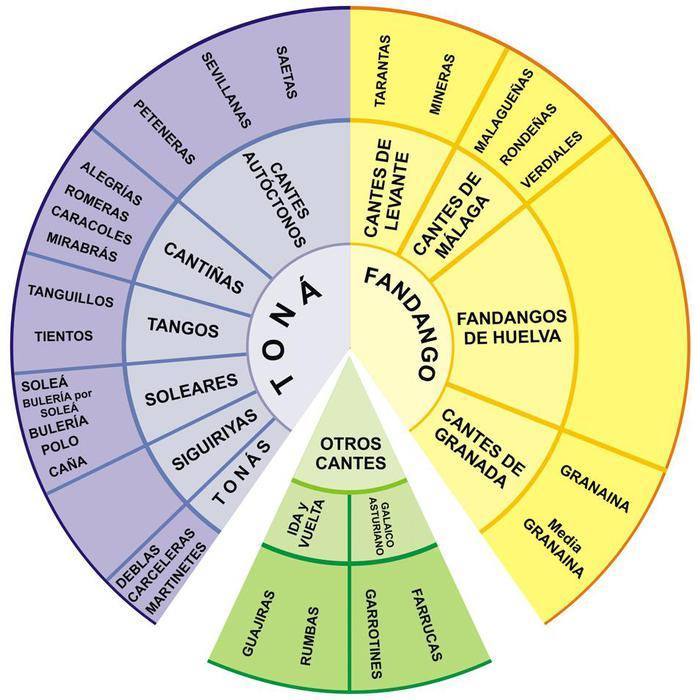flamenco
Imported flamenco sounds
Songs and dances imported from Latin America or from other regions of Spain that were mixed together with flamenco in Andalusia.

Colombiana, Vidalita and Milonga
Colombiana
Quite often flamenco experts don’t include the colombianas or the vidalitas in this the sones aflamencados cathegory because they think they do not have a strong enough flamenco soul. The Colombiana, name that comes from Colombia, is often included in the "cantes de ida y vuelta" cathegory or Hispano-American influenced styles, though some flamenco experts don't agree. However, it doesn’t actually come from Colombia but was created by Pepe Marchena and Hilario Montes with the model of the Spanish rumba. Oddly enough, it is one of the most popular hispanic-american styles.
Vidalita
The Vidalita is a musical style from Argentina and Uruguay sang by the gauchos with their guitars, its lyrics are about love and passion. It seems that it comes from the sentence “mi vida” (my life). Sometimes it is confused with the vidala. The vidalita is slower than the vidala and its verses are cheerful even if the music is sad. In its verses appear the word “vidalita” a lot to show that the singing is aimed to be this variety.
Milonga
The milonga is another variety performed by repatriate, colonist, artists and soldiers who came back to Spain at the end of the XIX century recalling the American lands. As the vidalita, the milonga comes from Argentina. The experts Romualdo Molina and Miguel Espín said that the milonga danced in the flamenco comes from the dramatization of the milonga from Argentina. The lyrics tell stories about love and disillusion. Some singers perform it with a fandango style and others with the style of bulerias and rumbas.
Quite often flamenco experts don’t include the colombianas or the vidalitas in this the sones aflamencados cathegory because they think they do not have a strong enough flamenco soul. The Colombiana, name that comes from Colombia, is often included in the "cantes de ida y vuelta" cathegory or Hispano-American influenced styles, though some flamenco experts don't agree. However, it doesn’t actually come from Colombia but was created by Pepe Marchena and Hilario Montes with the model of the Spanish rumba. Oddly enough, it is one of the most popular hispanic-american styles.
Vidalita
The Vidalita is a musical style from Argentina and Uruguay sang by the gauchos with their guitars, its lyrics are about love and passion. It seems that it comes from the sentence “mi vida” (my life). Sometimes it is confused with the vidala. The vidalita is slower than the vidala and its verses are cheerful even if the music is sad. In its verses appear the word “vidalita” a lot to show that the singing is aimed to be this variety.
Milonga
The milonga is another variety performed by repatriate, colonist, artists and soldiers who came back to Spain at the end of the XIX century recalling the American lands. As the vidalita, the milonga comes from Argentina. The experts Romualdo Molina and Miguel Espín said that the milonga danced in the flamenco comes from the dramatization of the milonga from Argentina. The lyrics tell stories about love and disillusion. Some singers perform it with a fandango style and others with the style of bulerias and rumbas.


Guajira, Garrotín and Farruca
Guajira
In Spain the guajira started to be popular at the end of the XVIII century. The musical culture from Canarias and their way of playing the guitar have influenced the guajira music. In Latin-America, in Cuba, the white peasants were called “guajiros”, and were the ones who brought these songs to Spain, that’s why this kind of music is called guajira music, the music played in rural areas. Later, they mixed with the flamenco music and became popular in the twenties and thirties. The guajira is part of the peasant music and is similar to the criolla and the punto cubano as they both recall the rural life and love stories. The guajira alternates betwwn 3:4 and 6:8 rhythms. The first part is composed in minor mode and the second in major mode. It ends with the tone's dominant in which is composed. There is another style called guajira, the guajira-son, which is fused with the son. These latinamerican songs, that were not considered flamenco by orthodoxes, were included in the repertory of great singers due to the demands of the record companies. Among them stood out: Juan Breva, Manuel Escasena, Sebastián el Pena and la Niña de los Peines
Garrotín
This variation was created to accompany the dance. Its origin isn’t clear but even if it came from Asturias, Catalonia or Andalusia it was nice that it joined the flamenco, even as a secondary style. Carlos Almendros who sees it as another root of the sings of importation says: The garrotin is a sing and dance from Asturias. Its adaptation to flamenco took place at the end of XIX century.Pastora Pavón, La Niña de los Peines, gave its definitive nature with the son and extension that has now. Antonio Mairena gave it a flamenco nature. Many are the ones who claim the authorship of the dancing style. In the first decade of the XX century a dancer called Lázaro el Negro exaggerated so much the gestures of the style that ended up as a parody of the dance. Another famous garrotín performer was Dora the Gypsy, who dared dress with trousers on the stage. Many other famous dancers have performed it: Carmen Amaya, Emma Maleras, Antonia Mercé, La Argentina, Merche Esmeralda, Mariquilla or La Tati.
Farruca
Andalusia enriched its culture with the tonadas that the people from Galicia brought there in the XX century, called farrucos by the Andalusian. It is said that the singer from Jerez, Manuel Lobato, El Lolo, was the one who introduced the flamenco nature in the rhythms from Galicia. This sing along with the campanilleros were the ones who made Manuel Torres famous in the singing cafés of Seville. The authorship of this dance belongs to Faíco, who along with the guitarist Ramón Montoya became famous. Other great farruqueros were Joaquín and Ramírez from Jerez. But it was, however, Antonio Escudero, El Gato, the one who put his personality into it and became even more famous.
In Spain the guajira started to be popular at the end of the XVIII century. The musical culture from Canarias and their way of playing the guitar have influenced the guajira music. In Latin-America, in Cuba, the white peasants were called “guajiros”, and were the ones who brought these songs to Spain, that’s why this kind of music is called guajira music, the music played in rural areas. Later, they mixed with the flamenco music and became popular in the twenties and thirties. The guajira is part of the peasant music and is similar to the criolla and the punto cubano as they both recall the rural life and love stories. The guajira alternates betwwn 3:4 and 6:8 rhythms. The first part is composed in minor mode and the second in major mode. It ends with the tone's dominant in which is composed. There is another style called guajira, the guajira-son, which is fused with the son. These latinamerican songs, that were not considered flamenco by orthodoxes, were included in the repertory of great singers due to the demands of the record companies. Among them stood out: Juan Breva, Manuel Escasena, Sebastián el Pena and la Niña de los Peines
Garrotín
This variation was created to accompany the dance. Its origin isn’t clear but even if it came from Asturias, Catalonia or Andalusia it was nice that it joined the flamenco, even as a secondary style. Carlos Almendros who sees it as another root of the sings of importation says: The garrotin is a sing and dance from Asturias. Its adaptation to flamenco took place at the end of XIX century.Pastora Pavón, La Niña de los Peines, gave its definitive nature with the son and extension that has now. Antonio Mairena gave it a flamenco nature. Many are the ones who claim the authorship of the dancing style. In the first decade of the XX century a dancer called Lázaro el Negro exaggerated so much the gestures of the style that ended up as a parody of the dance. Another famous garrotín performer was Dora the Gypsy, who dared dress with trousers on the stage. Many other famous dancers have performed it: Carmen Amaya, Emma Maleras, Antonia Mercé, La Argentina, Merche Esmeralda, Mariquilla or La Tati.
Farruca
Andalusia enriched its culture with the tonadas that the people from Galicia brought there in the XX century, called farrucos by the Andalusian. It is said that the singer from Jerez, Manuel Lobato, El Lolo, was the one who introduced the flamenco nature in the rhythms from Galicia. This sing along with the campanilleros were the ones who made Manuel Torres famous in the singing cafés of Seville. The authorship of this dance belongs to Faíco, who along with the guitarist Ramón Montoya became famous. Other great farruqueros were Joaquín and Ramírez from Jerez. But it was, however, Antonio Escudero, El Gato, the one who put his personality into it and became even more famous.
Colombianas. Rocío Jurado
